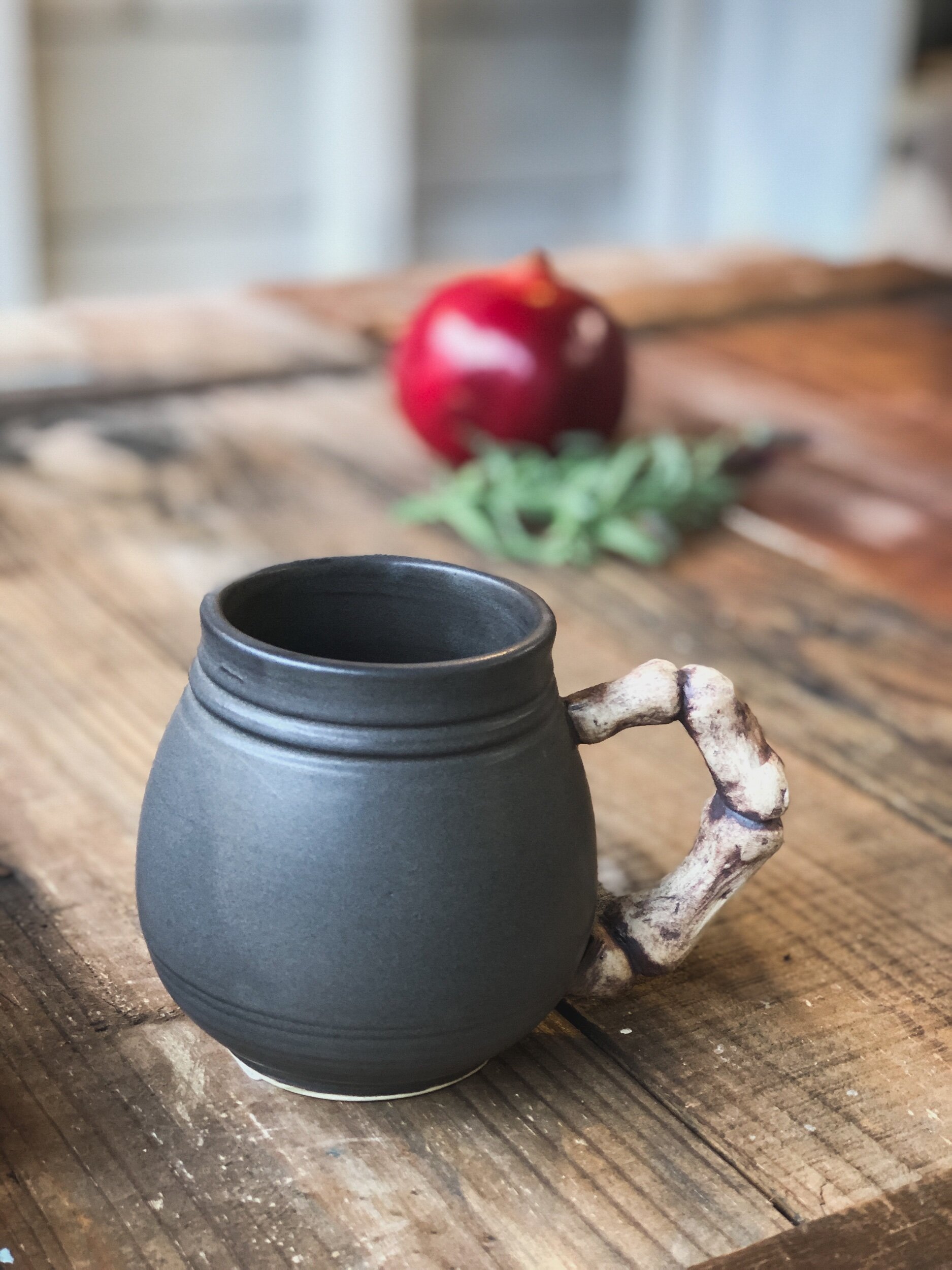Occult Objects
The Story Behind the Designs
I can thank a small bookstore in Santa Cruz for inspiring this series. I had no idea when I picked up “The Gothic” by Nick Groom that it would spark this series of mugs and a series of questions I’m still exploring to this day.
Reading though this short history of the word “Gothic”, I was stunned to learn about the roots of Gothic architecture, and intrigued by how associations with this architectural style changed over time.
What began as a tool to create a more light, Heaven-like atmosphere within churches and cathedrals became a visual language associated with ruin, decay, ghosts, and all things macabre. For a modern example, think of a classic haunted castle, or the mansion in Guillermo del Toro’s “Crimson Peak”.
Captivated by this cultural 180, I began thinking more about how associations form, and the hidden through lines between history and popular culture.
How does the idea of a witch cover an old woman on a broomstick, Hermione Granger, and #witchyvibes? Why do we all know that silver hurts werewolves? What historical scaffolding has layered to form our baseline understanding of alchemy, astrology, ghosts, monsters, magic, and all things occult?
I’ve pulled on these threads of history and pop culture in sculptural form through pieces like Animarum and Psychopomp, but I’ve also explored them through wheel-thrown work.
Sometimes that exploration takes the form of a serving bowl I meticulously carved while relishing in the lines and forms of this complex visual language. Other times it takes the form of a macabre “finger bone” serving as a handle for a cauldron-like mug.
Either way, each piece from this series taps into that undercurrent of fascination with the historical and cultural underpinnings of our collective imaginations.
Changing Associations
In the Ouija Board planchette mugs, I deconstruct and rearrange the components of a Gothic cathedral window to fit the layout of a planchette (the part of a Ouija/talking board that moves to spell out words).
While rooted in my curiosity about the connection between Gothic architecture and Spiritualism, the ideas behind this series evolved as I learned more about the history of the Spiritualist movement.
Spiritualism was a cultural movement of the 1800’s and early 1900’s that has influenced many of our current ideas about things like mediums, spirit photography, hauntings, and the occult.
Until very recently, when I thought of Spiritualism, I thought of Ouija boards in candle-lit rooms, ghosts showing up in hazy photographs, and white people in fancy clothes walking down creepy hallways.
I didn’t understand the depth and complexity of this cultural movement, or that it actually had ties with anti-slavery and women’s rights activism.
Without my intending it to, this design reminded me that cultural associations are constructed — people choose what’s written into history, and power structures influence what becomes popular culture.
Even understanding those dynamics, it’s so easy to see the threads of history as individual strands, and to miss how they’re woven together to form a fuller, more nuanced picture.
I may have started these Ouija Board Planchette mugs with other thoughts in mind, but I find it appropriate that my association with them has changed.
As I look at them now, I not only see my passion for history and architecture, but a reminder of the continued work necessary to understand and deconstruct the white-centered lens through which I have understood history, and through which my cultural associations are formed.
(For more information about Spiritualism and its links to social justice movements, see season two of the history podcast “Unobscured” here.)






